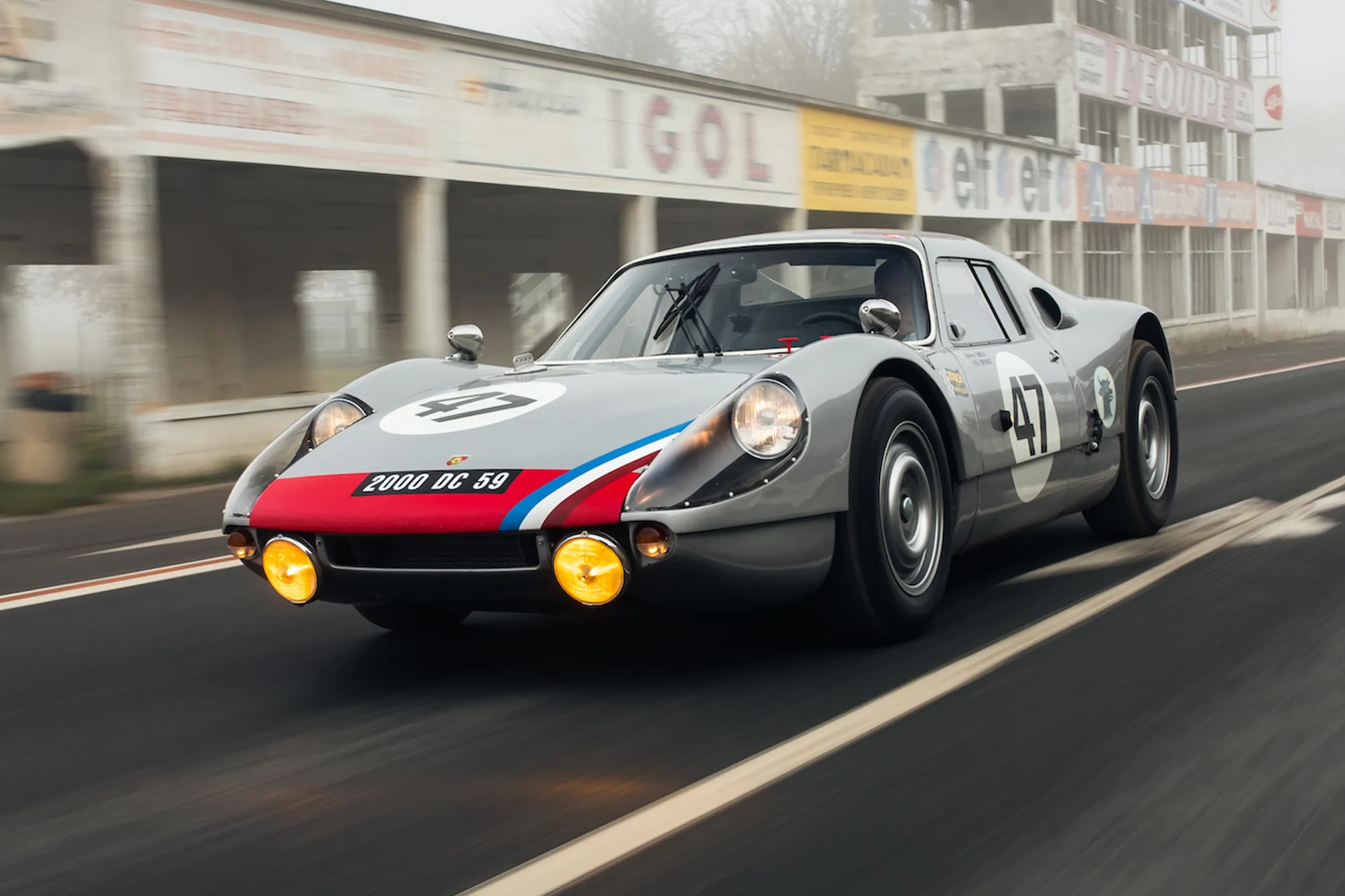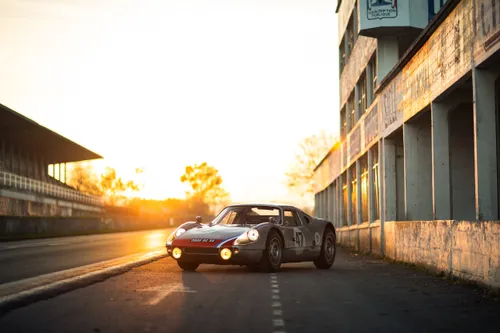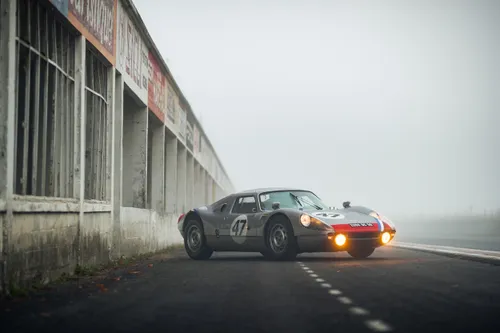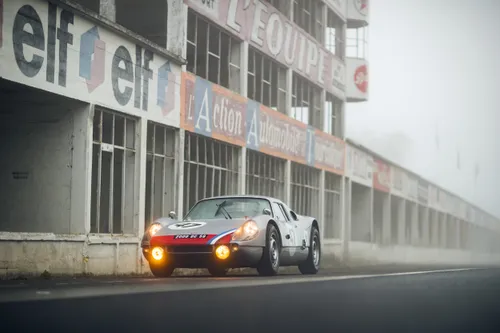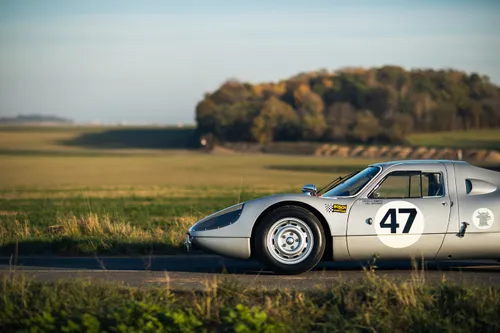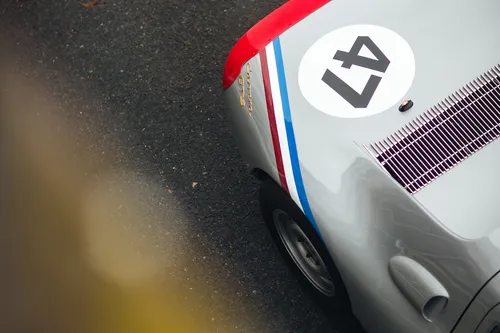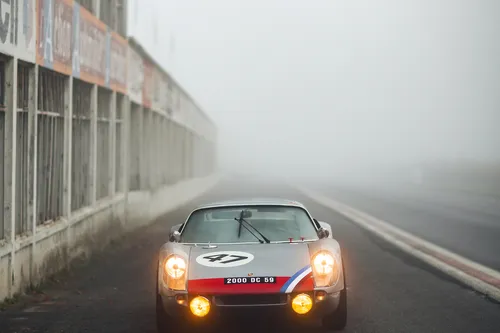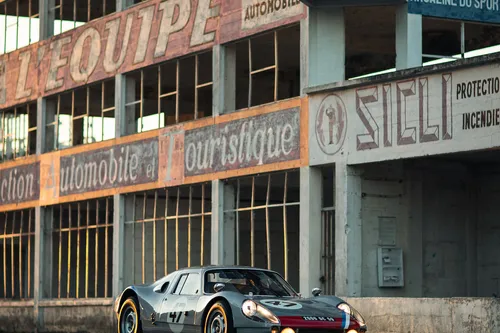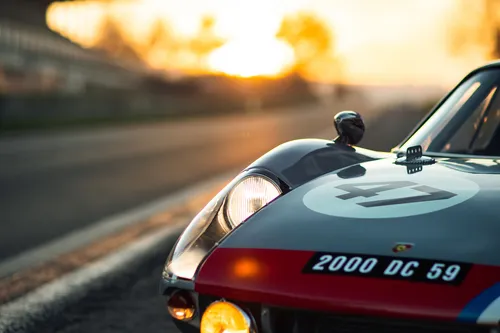In the taverns of France’s Champagne region, you’ll hear murmurs that if you venture into the ruins of Circuit de Reims-Gueux in the early hours of the morning, you just might see the ghosts of the cars that raced there half a century ago.
The clock reads 5am and the mercury hovers just above freezing, the old grandstand stands blanketed by a thick fog that barely reveals the end of the pit lane. Standing in the old pit boxes surrounded by crumbling hand-painted signs for long-gone companies, the atmosphere is so rich it’s hard to believe almost fifty years have passed since sports cars last raced around the famously rapid 2.2km circuit.
Then the unmistakable sound of a flat-six begins to break the silence, building into a hair-raising wail that would put any banshee to shame. Four lights pierce the mist, chased by a silhouette that rapidly forms into a Silver Metallic Porsche 904-6, ripping past back into the fog as quickly as it emerged, the sound of its engine shaking the dust loose from the old structure.
The Porsche 904 — officially named the Carrera GTS to keep Peugeot happy — was the first of a lineage of prototypes to emerge from Stuttgart that would eventually culminate in the world-destroying 917. After retiring from Formula 1, Porsche needed to look elsewhere for its racing fix, and so they turned to sports car racing.
Taking a leaf out of Colin Chapman’s book, the 904 was the first Porsche to use a ladder chassis bonded to a fibreglass body, making it more of a purpose-built racer than the modified sports cars common at the time. As the name suggests, the 904 was initially offered with an incredibly complex four-cam 1.5-litre flat-four, putting out 180hp; an engine supremely difficult to build and assemble, but incredibly durable once complete.
This particular 904 placed second in the GT class of the Reims 12 Hours in 1965, outcompeting Ferrari 250 LMs and GTOs alike. However, in 1966 it would run its final race, before a crash saw the car stowed away for decadesWhen we last saw this Porsche 904, it was screaming past the grandstand of Circuit de Reims-Gueux. Having done a lap of the now-decommissioned French circuit, it has returned to the pits for a closer examination.
While this 904 may look factory-fresh today, a fire caused by a crash at Rally Picardie in 1966 saw the damaged car stowed away in a barn somewhere in the Champagne region, for over half a century. While these cars may fetch millions today, at the time of this 904’s accident, the cost of repairing the fibreglass body meant purchasing a new car was often the sensible choice. A choice made easier when one considers that the cutting-edge tubular-framed Porsche 906 replaced the 904 earlier that year.
So chassis 904-081 lay in waiting, until about three years ago, when Kevin Morfett of Historika rediscovered it on the Belgium-France Border, putting an end to a 10-year hunt. Placing it on a jig, all measurements indicated it to be a genuine 904 chassis, so Historika got to work.
Using as many original parts as possible, and referencing original factory manuals to make sure everything was as Butzi Porsche intended, Historika began the painstaking process of reassembling a prototype race car from the 60s. That meant rebuilding the original gauges and wiring loom, and having the fibreglass body rebuilt around the chassis as it was originally. Even the hand-painted Tricolore stripe and roundels are an exact copy of this car’s livery from the 60s.
One area where Historika deviated from the script was the addition of the 904-6’s flat six, to make the car more competitive at historic races such as Goodwood Revival and Le Mans Classic. As one of a handful of Porsche specialists in the UK that has the capabilities for in-house engine and gearbox engineering, Historika rebuilt the engine to specification, but with modern techniques to ensure this 904 is as potent as it is drop-dead gorgeous. We think you’ll agree: sitting here, back in the pit lane of the track where it took home a podium finish five decades ago, this 904 looks right at home.
Photos by @tshaxson for @type7
Words by @mikeysnelgar for @type7


